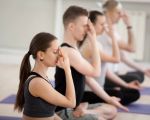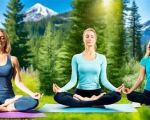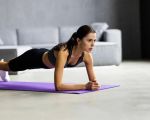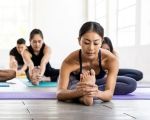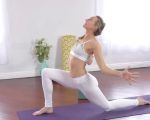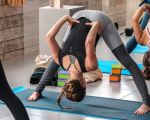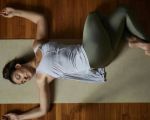- 1-The-Foundation-of-Strength-and-Flexibility-in-Yoga
- 2-Key-Yoga-Poses-to-Build-Strength
- 3-Yoga-Poses-That-Enhance-Flexibility
- 4-Combining-Breathwork-with-Movement-for-Optimal-Results
- 5-Creating-a-Balanced-Yoga-Practice-for-Strength-and-Flexibility
- 6-Real-Life-Stories-of-Strength-and-Flexibility-Improvement-Through-Yoga
- 7-Tips-for-Maintaining-Progress-and-Avoiding-Injury
1. The Foundation of Strength and Flexibility in Yoga
Yoga uniquely combines strength and flexibility by engaging muscles through controlled movements and deep stretches. Unlike traditional workouts that focus solely on muscle building or stretching, yoga integrates these elements harmoniously to develop a balanced body.
Practicing yoga regularly promotes muscle tone, joint mobility, and connective tissue health, laying the groundwork for improved physical performance. This approach not only enhances athletic abilities but also supports daily activities, reducing the risk of injuries and improving posture.
2. Key Yoga Poses to Build Strength
2.1 Plank Pose (Phalakasana)
Plank pose is a foundational posture that strengthens the core, arms, shoulders, and legs. Holding this position requires full-body engagement and builds muscular endurance over time.
2.2 Warrior Poses (Virabhadrasana I and II)
Warrior poses activate the lower body muscles, including the quadriceps, glutes, and calves, while also engaging the arms and back. These poses improve both strength and stability.
2.3 Chair Pose (Utkatasana)
Chair pose is excellent for building leg and core strength. The act of sitting back as if in an imaginary chair activates multiple muscle groups simultaneously.
3. Yoga Poses That Enhance Flexibility
3.1 Downward Dog (Adho Mukha Svanasana)
This classic pose stretches the hamstrings, calves, shoulders, and spine. Holding downward dog regularly promotes lengthening of tight muscles and improves circulation.
3.2 Cobra Pose (Bhujangasana)
Cobra gently stretches the chest, shoulders, and abdominal muscles while strengthening the lower back, helping to increase spinal flexibility.
3.3 Pigeon Pose (Eka Pada Rajakapotasana)
Pigeon pose deeply opens the hips and glute muscles, areas often tight from prolonged sitting or athletic activity.
4. Combining Breathwork with Movement for Optimal Results
Pranayama, or yogic breathing techniques, amplify the benefits of physical postures by increasing oxygen flow and reducing tension. Coordinating breath with movement encourages mindfulness and deeper muscle engagement, leading to improved strength and flexibility.
For instance, inhaling while lengthening the spine and exhaling during folds helps release tightness and build endurance. This synergy makes yoga a holistic practice for physical and mental wellbeing.
5. Creating a Balanced Yoga Practice for Strength and Flexibility
A well-rounded yoga routine alternates between strengthening postures and deep stretches. Starting with a warm-up that mobilizes joints prepares the body for more demanding poses. Integrating flow sequences, such as Sun Salutations, builds heat and stamina.
Listening to your body’s signals is essential to avoid overexertion. Consistency over intensity yields the best results, with gradual progression in pose difficulty enhancing both strength and flexibility sustainably.
6. Real-Life Stories of Strength and Flexibility Improvement Through Yoga
Sarah, a former runner with recurring hamstring injuries, found relief and improvement through yoga. After six months of consistent practice focused on flexibility and core strength, she regained full range of motion and reduced injury frequency.
Another story is from Mike, who struggled with upper body weakness. Incorporating yoga poses like plank and chair transformed his strength levels, allowing him to engage more confidently in daily activities and other sports.
7. Tips for Maintaining Progress and Avoiding Injury
To safely improve strength and flexibility with yoga, it’s crucial to practice with proper alignment and patience. Using props such as blocks and straps can support challenging poses and prevent strain.
Rest days and complementary activities like walking or swimming promote recovery. Seeking guidance from experienced instructors ensures technique accuracy and personalized adjustments.
For those looking to deepen their practice, Free Yoga Links offers curated resources, classes, and expert advice to help you achieve your strength and flexibility goals effectively.

